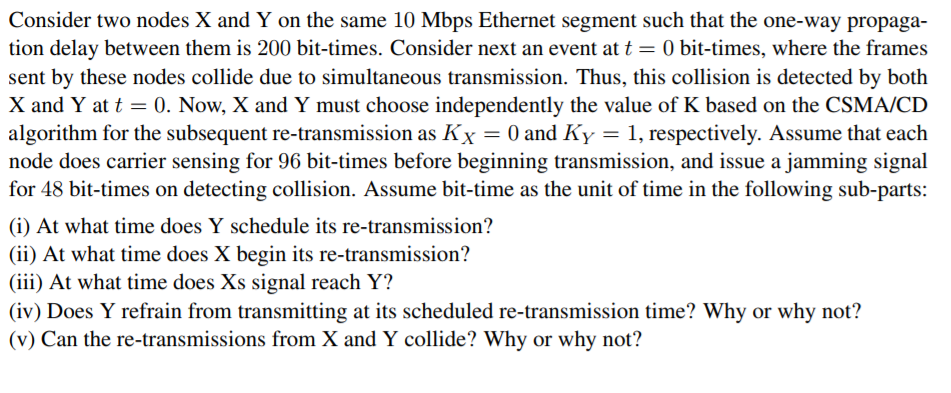Question
Consider two nodes X and Y on the same 10 Mbps Ethernet segment such that the one-way propagation delay between them is 200 bit-times. Consider
Consider two nodes X and Y on the same 10 Mbps Ethernet segment such that the one-way propagation delay between them is 200 bit-times. Consider next an event at t = 0 bit-times, where the frames sent by these nodes collide due to simultaneous transmission. Thus, this collision is detected by both X and Y at t = 0. Now, X and Y must choose independently the value of K based on the CSMA/CD algorithm for the subsequent re-transmission as KX = 0 and KY = 1, respectively. Assume that each node does carrier sensing for 96 bit-times before beginning transmission, and issue a jamming signal for 48 bit-times on detecting collision. Assume bit-time as the unit of time in the following sub-parts
Step by Step Solution
There are 3 Steps involved in it
Step: 1

Get Instant Access to Expert-Tailored Solutions
See step-by-step solutions with expert insights and AI powered tools for academic success
Step: 2

Step: 3

Ace Your Homework with AI
Get the answers you need in no time with our AI-driven, step-by-step assistance
Get Started


